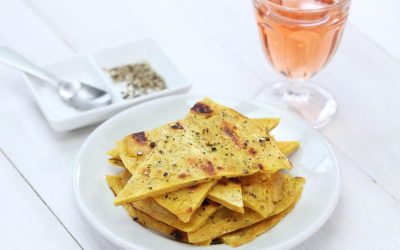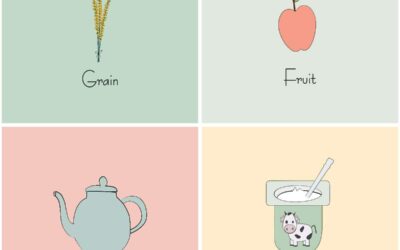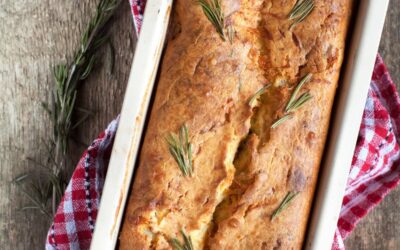So I should say right off the bat that French people don’t really snack. The afternoon goûter in France is something that is reserved for children, that most French adults give up once they start their working lives.
Nonetheless, attitudes are changing and with that, I have put together a list of tried and true French afternoon snacks that both kids and adults will enjoy.
You will notice I didn’t include too many patisserie or cakes like macarons on the list. This is because French people don’t usually eat those sorts of desserts unless it is a special occasion. These are usually given as gifts to other people, not purchased for the afternoon snack.
But once in a while, anything goes! So let’s get to the top French snacks to indulge in, shall we? Allons-y!
- 1. Crêpe with jam or honey
- 2. Tartine au chocolat
- 3. Riz au lait
- 4. Brioche
- 5. Fromage blanc with berries
- 6. Eclairs
- 7. Fromage frais on whole wheat bread
- 8. Cake Salé
- 9. Mousse à la fraise
- 10. Yogurt Cake
- 11. Pain Perdu
- 12. French Flan
- 13. Chouquette
- 14. Gougères
- 15. Panisse
- 16. Les Chips
- 17. Chaussons aux pommes
- 18. Pommes Frites
- 19. Pain au chocolat (Chocolatine)
- 20. Sable biscuits
- 21. Socca
- 22. Vol-au-vent
- 23. Gauffres
1. Crêpe with jam or honey
A crêpe is one of those things that you can have for breakfast, lunch, or dinner, depending on its toppings, so why not for an afternoon snack as well? In France, we have two types of crêpes, sarrasin and froment.
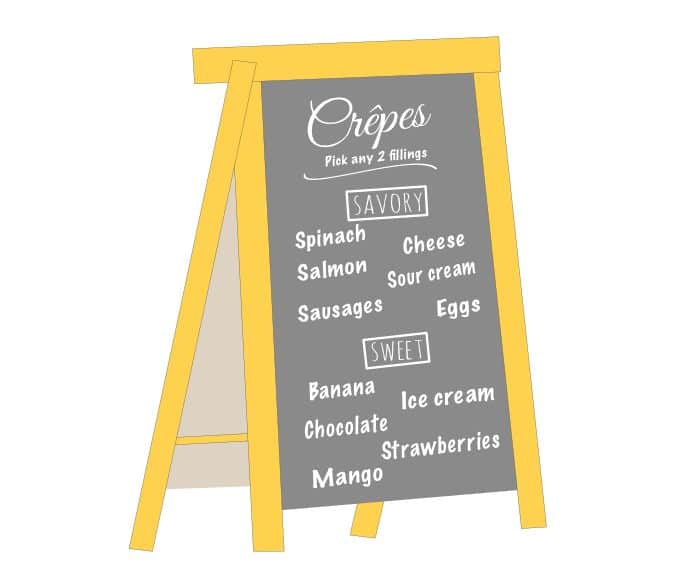
Froment is regular wheat and is usually used for the crêpe sucrée (sugary crêpes), such as crêpes with honey, fruit toppings, or ice cream.
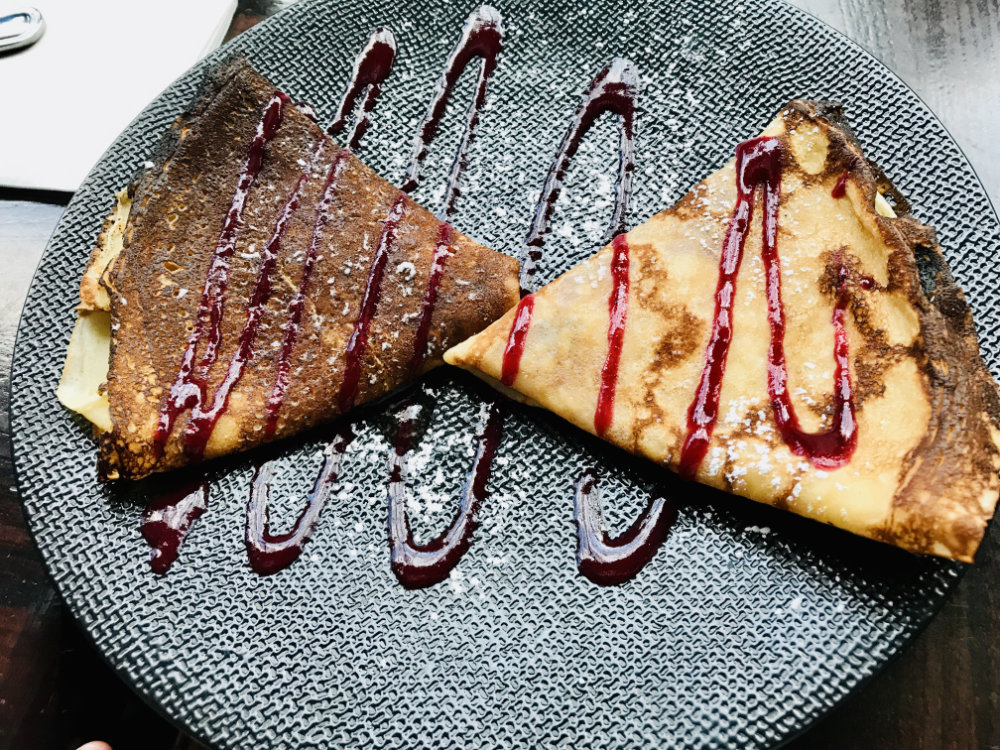
Sarrasin crêpes, on the other hand, are made from buckwheat. You can use them with crêpe sucrée or for crêpes salées (salty crêpes) with cheese, ham, eggs, etc.
You can prepare the crêpes yourself or get them in the frozen section of finer grocery stores. Don’t go overboard though with the toppings, in the words of your mom: “you’ll spoil your dinner!” You can get the recipe for a sweet Crêpe Suzette here.
2. Tartine au chocolat
The simplest of all snack ideas, and the absolute favorite of my kids: slather a bit of nutella or chocolate cream spread on a piece of baguette and you have a tartine au chocolat.
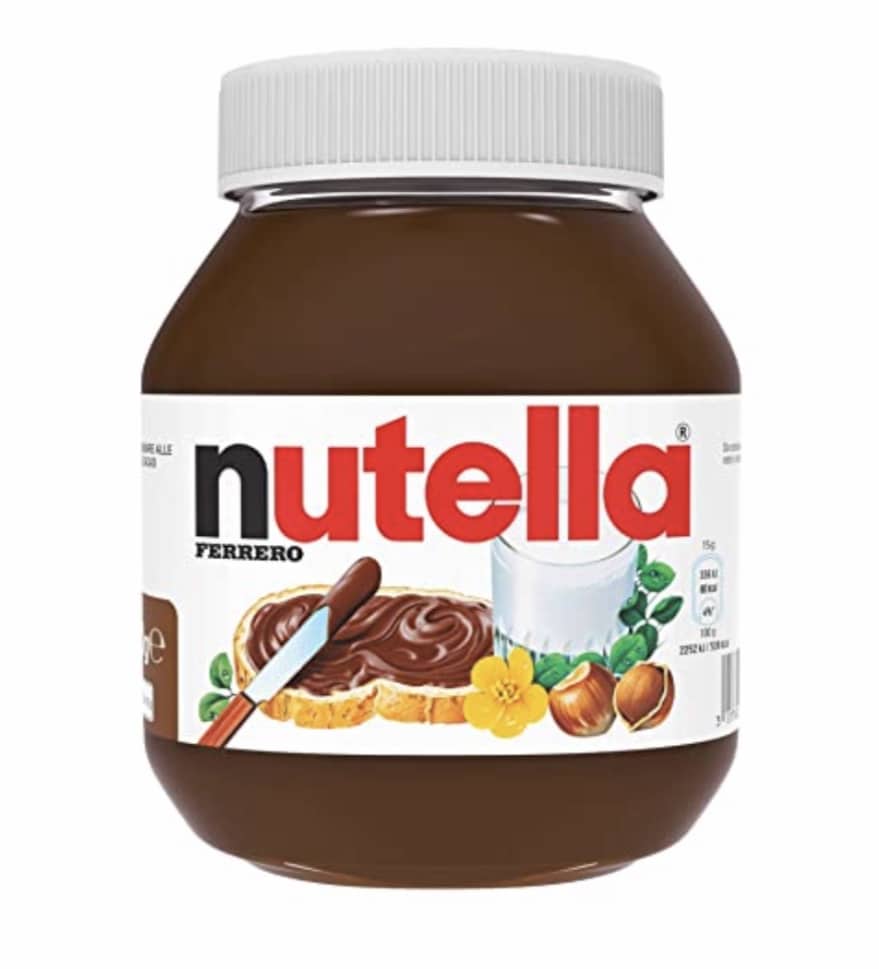
This seems absolutely decadent, but if you use whole wheat bread and a good chocolate spread, it is certainly better than an industrially-produced cake. If you don’t have baguettes nearby, use sliced bread, no one will complain.
3. Riz au lait
Riz au lait is one of those underrated french snacks that is easy to put together, and also quite filling. It is basically a rice pudding, where round rice is cooked in milk with a touch of vanilla and/or sugar.
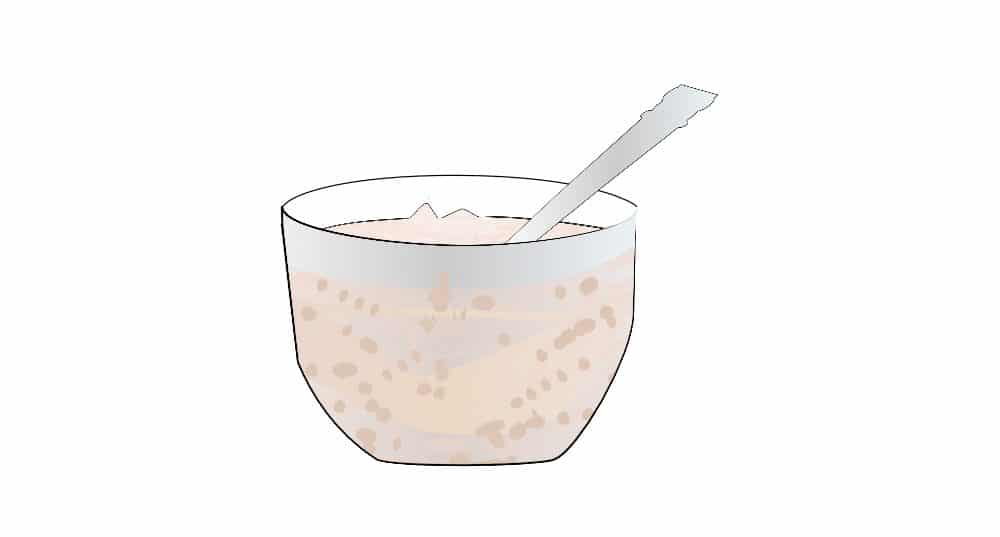
After the rice has cooked, serve it in a bowl with a bit of cinnamon spice or some clementine oranges for extra flavor. You can see the full riz au lait recipe here.
4. Brioche
A brioche is a light sweet French bread containing eggs and butter. It is a cross between a bread, a cake, and a viennoiserie (pastry) and is believed to originate from Normandy in the 16th century.
The purportedly famous saying by Marie-Antoinette was actually “Qu’ils mangent de la brioche!“, not “cake”, which is gâteau in French. You can use it for a tartine with jam or butter, or just eat it plain.
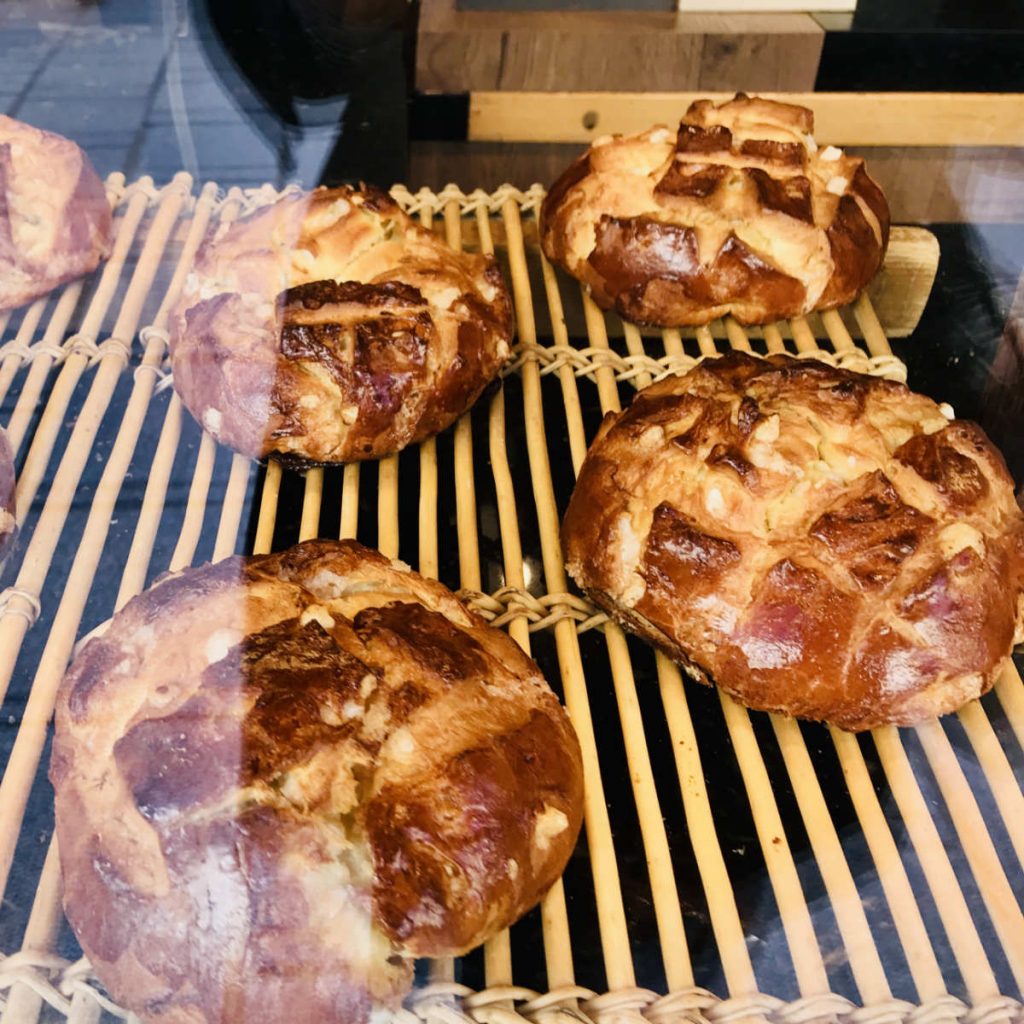
There are several types of brioches, with each region having its own recipe and speciality:
- Brioche Parisienne – the classic brioche made from butter, eggs, milk, flour, sugar, salt, yeast. Brioche de Paris is recognizable for its shape, made up of two superimposed balls, the smaller one on top of a larger one.
- Brioche de Nanterre – the historic brioche dating back to the days of Saint Genevieve in 450 AD. Unlike the brioche parisienne, the brioche de Nanterre is rectangular and made up of balls of dough placed side by side.
- Brioche tressée de Metz – a braided brioche (three pieces of dough braided together) from Metz during festive occasions.
- Brioche au sucre – brioche with small bits of sugar on the crust.
- Brioche vendéenne – a large round brioche that is sometimes called the pain de Pâques, as it is usually served for Easter (and sometimes during weddings in the Vendée region of France.)
- Cougnou – a brioche that is eaten in December during the period of Saint Nicholas and Christmas. It is oval-shaped with a decoration in the middle to look like a baby Jesus swaddled and lying down.
- Tarte tropézienne – a brioche shaped like a cake that is flavored with the orange flower water. In the middle, it is filled with a butter cream and a custard.
5. Fromage blanc with berries
I was trying to figure out how to translate fromage blanc into English, when I realized that it is actually called “fromage blanc” at Whole Foods in the U.S.

It looks like yogurt and will usually be found in the same aisle, but it is actually a light white cheese. Mix in a few berries (strawberries, raspberries, blueberries, etc.) and you are good to go.
6. Eclairs
The grand classic of French snacks is of course the chocolate eclair. An oblong pastry, stuffed with cream and custard, and topped off with chocolate icing.
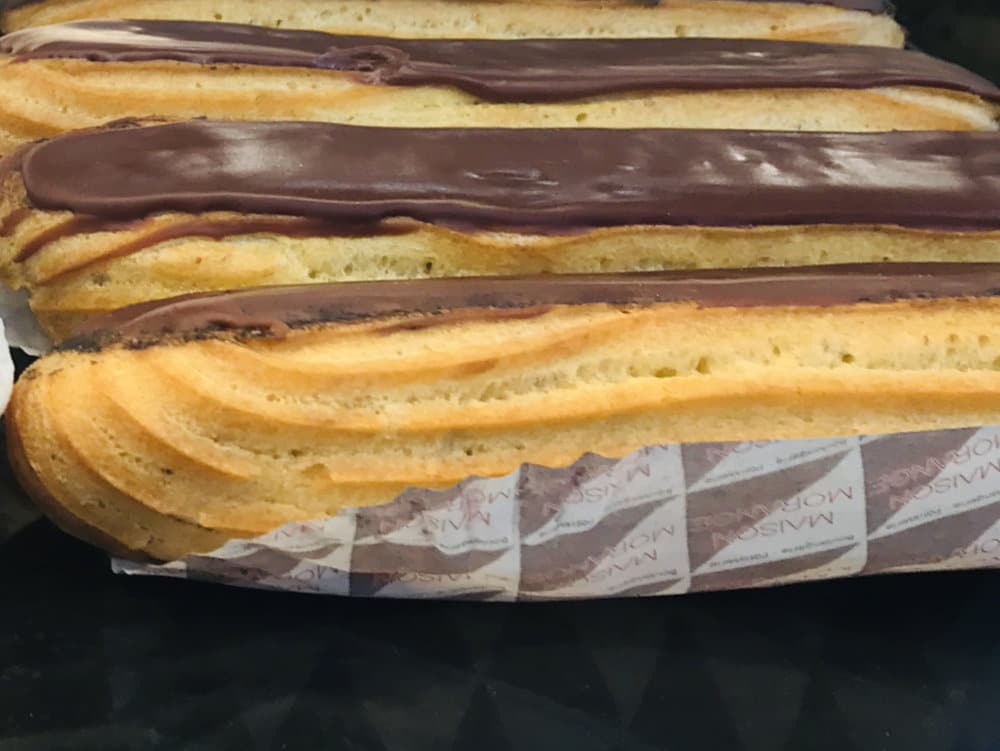
Forget the pastry filled with industrial sugar that you get in North America, head to a french bakery or one of the famed patisseries like Ladurée and Angelina‘s.
7. Fromage frais on whole wheat bread
Fromage frais in France is a light cheese that you can spread on bread. It originates from the North of France and is a bit of a mix between cottage cheese and cream cheese (either of which you could use in a pinch).
Pure fromage frais is fat-free, which is also why it is so popular in France. Spread it on some whole wheat bread for that easy-peasy french snack. Boursin cheese is a type of herbed fromage frais.
8. Cake Salé
The word “Cake” in french is actually gateau. A cake is actually a savory cake. And if you want to avoid sweets for your afternoon snack, the cake salé is perfect.
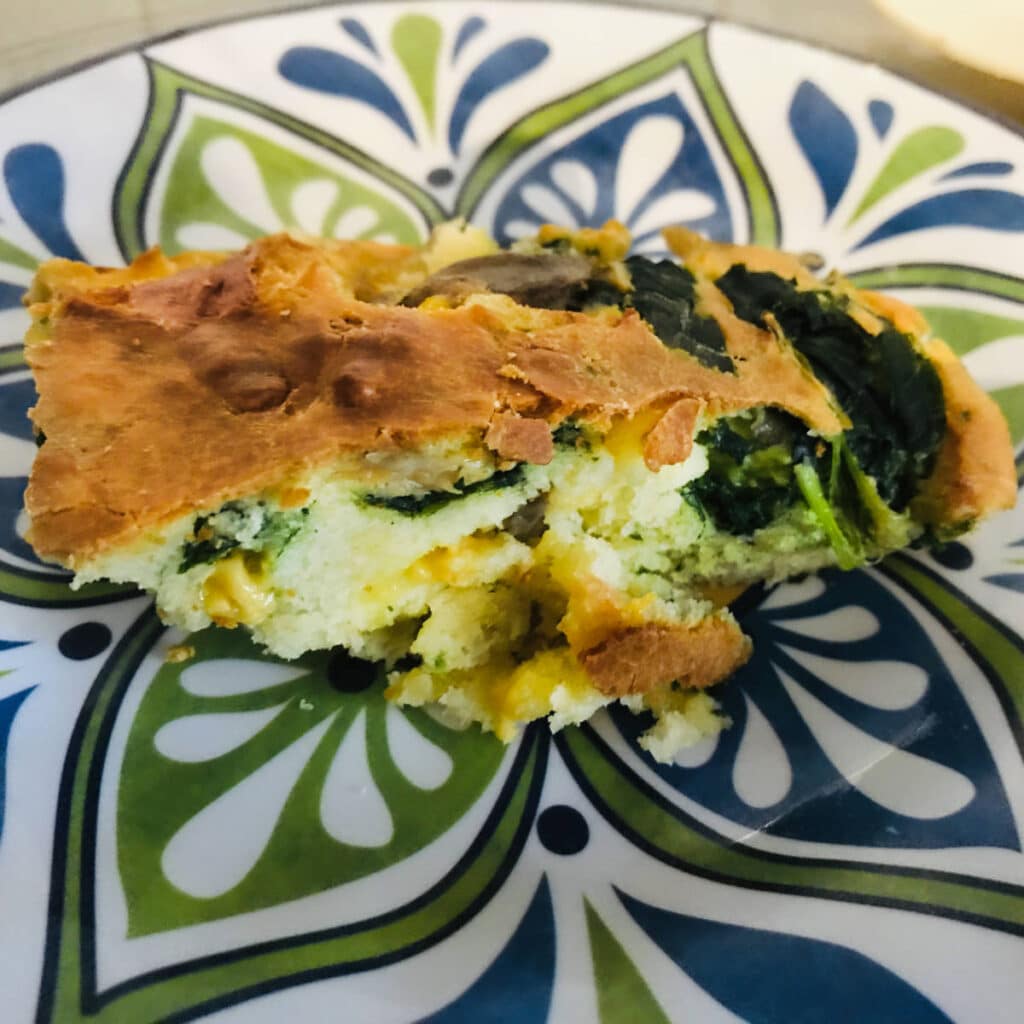
You can include all sorts of ingredients such as ham and cheese, or dried tomatoes and olives. You can find the full savory cake recipe here.
9. Mousse à la fraise
A mousse à la fraise (strawberry mousse) may seem complicated to prepare for a snack, but it is actually rather easy. Blend 300g (10oz) of strawberries in a blender, along with 2/3 cup of heavy cream and 3 egg whites. Mix in a couple of tablespoons of sugar and voila!
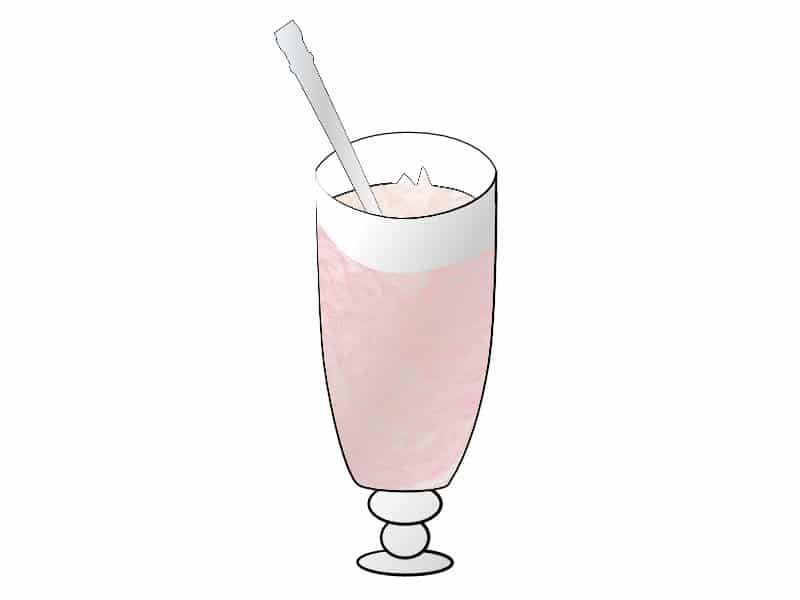
If you don’t like strawberries, any other fruit such as berries, cherries, watermelon, cantaloupe, etc. will do nicely. You can find the full strawberry mousse recipe here.
10. Yogurt Cake
The yogurt cake or gâteau au yaourt is sometimes called the Wednesday cake in France because it is a recipe that kids can easily follow. Kids in France don’t go to school on wednesdays, so this is the day that they can bake a cake with their parents/caretakers.

All the ingredients are measured in yogurt cup sizes, making it easy for kids to follow along and participate. You can see the full yogurt cake recipe here.
11. Pain Perdu
It is not called french toast in France, but rather a pain perdu (which translates literally to lost bread). Beat the eggs in a bowl and add a little bit of milk.
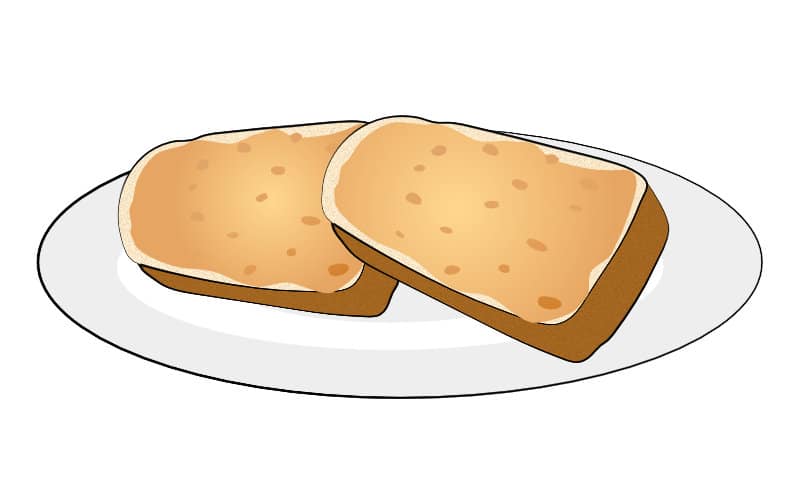
Place the bread in an oven sized pan, and cover with the egg mixture, and bake for 15 minutes at 180C (350F). Once cooked, add some sliced fruit or cinnamon on top.
12. French Flan
Now I should state that in France you can find a large variety of individual-size portions of flan in the yogurt aisle at the supermarket. However, you can always bake your own, and keep it in the fridge for a few days.

Note: a flan is not the same as a crème caramel, since it contains flour, which a crème caramel does not. You can see the full French flan recipe here.
13. Chouquette
A chou is a French nickname meaning “small and cute”, and as you can imagine the chouquette is equally small and cute. A small round pastry ball it is often topped with pearled sugar or chocolate.

These small bite-sized pastries were originally thought to be made from leftover dough, as a small snack. Unlike éclairs which have a filling inside, a chouquette is usually hollow on the inside.
A pyramid of chouquette is also the traditional French wedding cake called the croquembouche or la piece montée.
14. Gougères
Pronounced “gou-jaire”, there is no English equivalent. Gougères are delightfully small, hollow pastry puffs made with a doughy mixture of eggs, butter, flour, and cheese.

It’s basically puff pastry baked with cheese inside and it’s amazing. The French cheese balls, if you will.
They can be served warm or cold, by themselves or with a sauce like tomate provençale or béarnaise. You can get the recipe for gougères here and see more French sauces here.
15. Panisse
Another savory snack which is also perfect as finger food for an apéro or happy hour is the panisse.
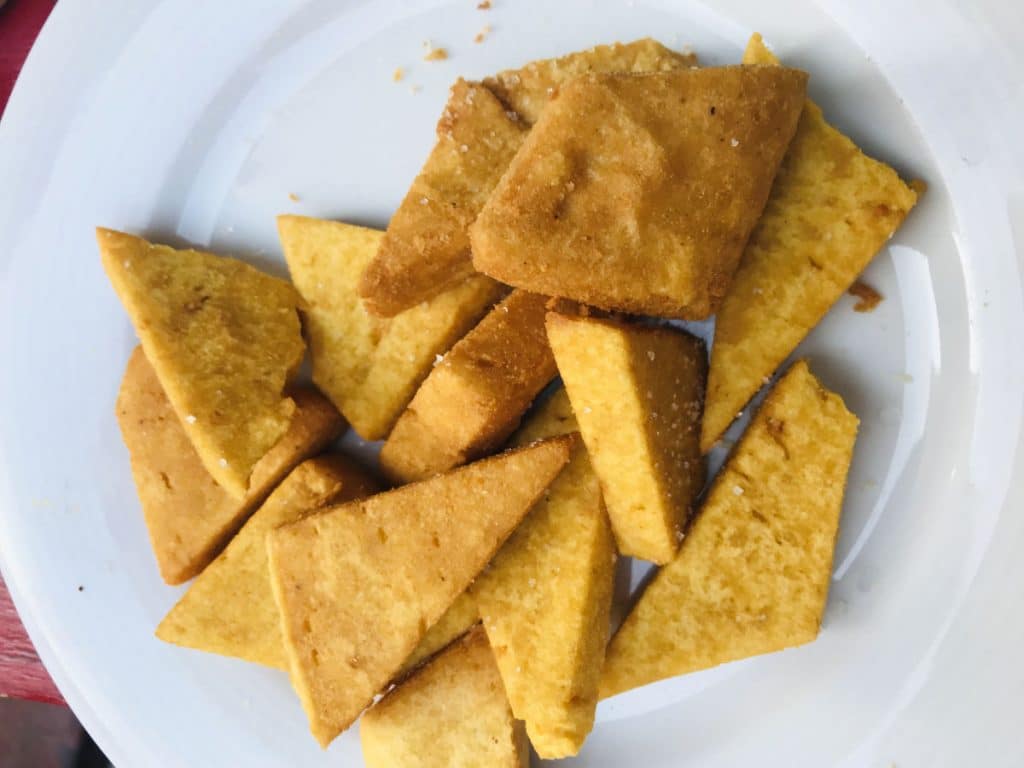
Originating in Nice (or Marseille), panisse is one of those snacks that everyone loves. Dairy-free and gluten free, it is also made with chickpea flour and can be baked or fried. You can get the panisse recipe here.
16. Les Chips
Of course I couldn’t leave out chips from a list of French snacks, even though they are not the healthiest.
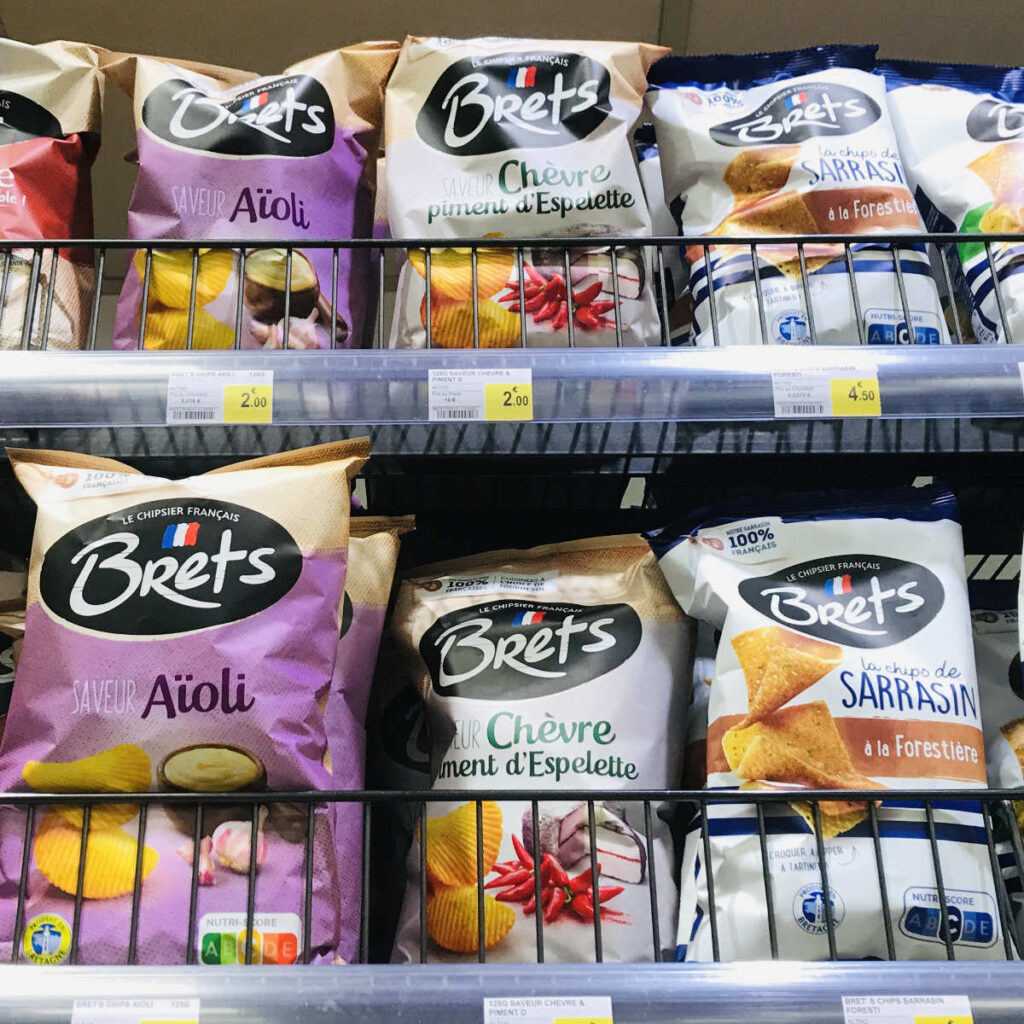
However, French chips tend to have rather “different” flavors such as aioli, but there are also flavors such as “Indian curry”, “merguez sausage” and “saveur yakitori”. It is also very rare to find spicy varieties of French chips, so forewarned.
17. Chaussons aux pommes
Using a similar pâte feuilletée as the croissant and pain au chocolat, a chausson aux pommes is made from adding cooked apples into the middle of the pastry, and then folding it in half before baking.
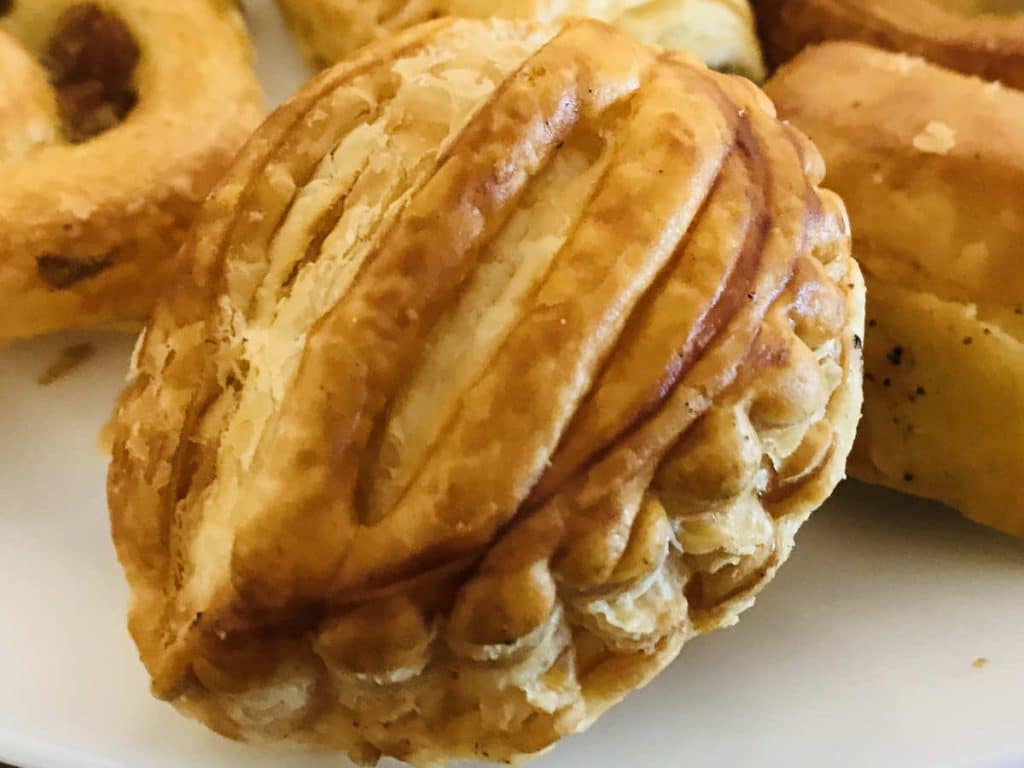
It is believed to originate from the region of Sarthe and Moselle in the north of France.
An annual festival called the Fête du Chausson aux Pommes has been celebrated since 1630 in September in the town of Saint-Calais in the Loire region.
18. Pommes Frites
Perhaps not ideal for an afternoon snack, but if you are in a hurry, a quick handful of pommes frites may be just what you are looking for.
French fries, or pommes frites as they are called in French, are actually Belgian. (Belgium is on the French border, and French is an official language in Belgium, the confusion arose.)
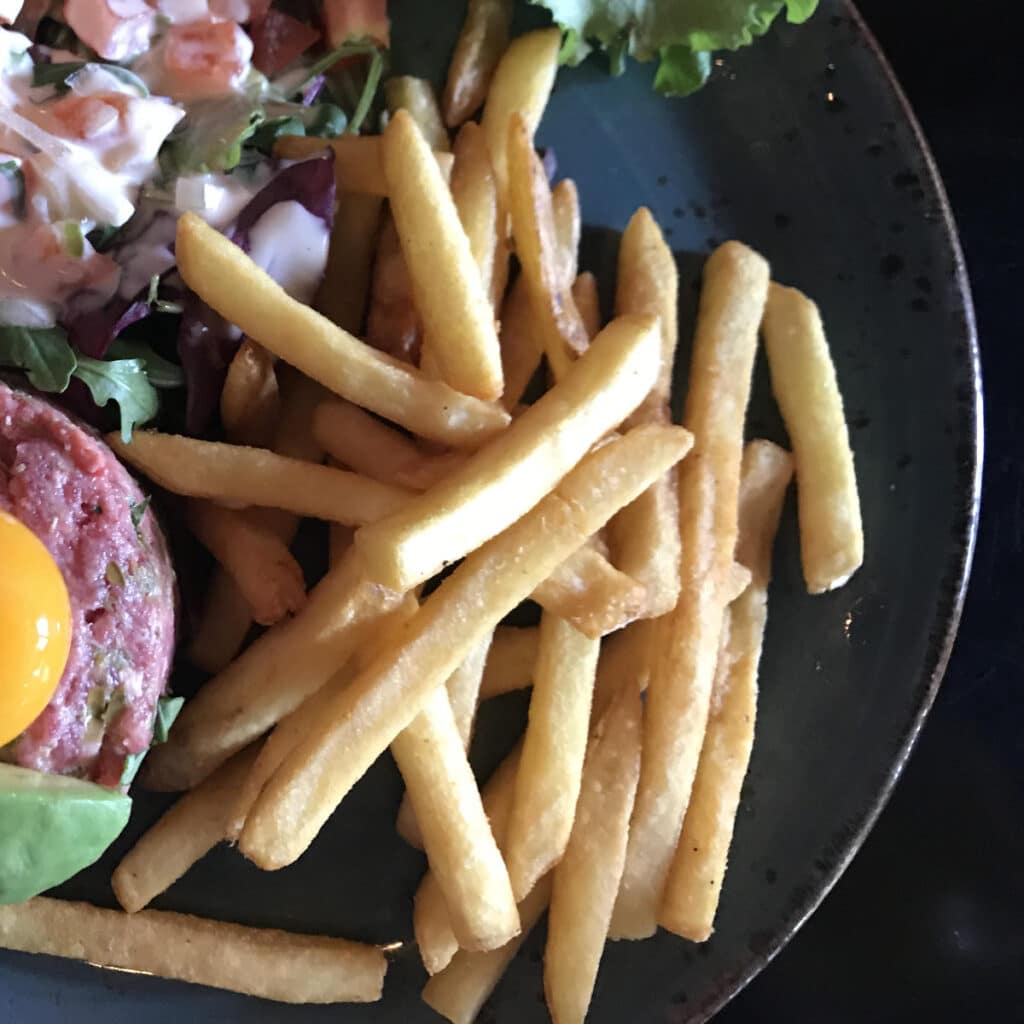
Potatoes cut into long strips and deep-fried were served to American, Canadian, and British troops in Belgium during World War I. Those troops then took stories of “french fries” home with them. These days, fries or frites are very popular in France.
19. Pain au chocolat (Chocolatine)
The debate has lasted for centuries: is it a pain au chocolat or a chocolatine? If you are from Paris and the north of France it is a pain au chocolat, but in the south-west of France it is a chocolatine.
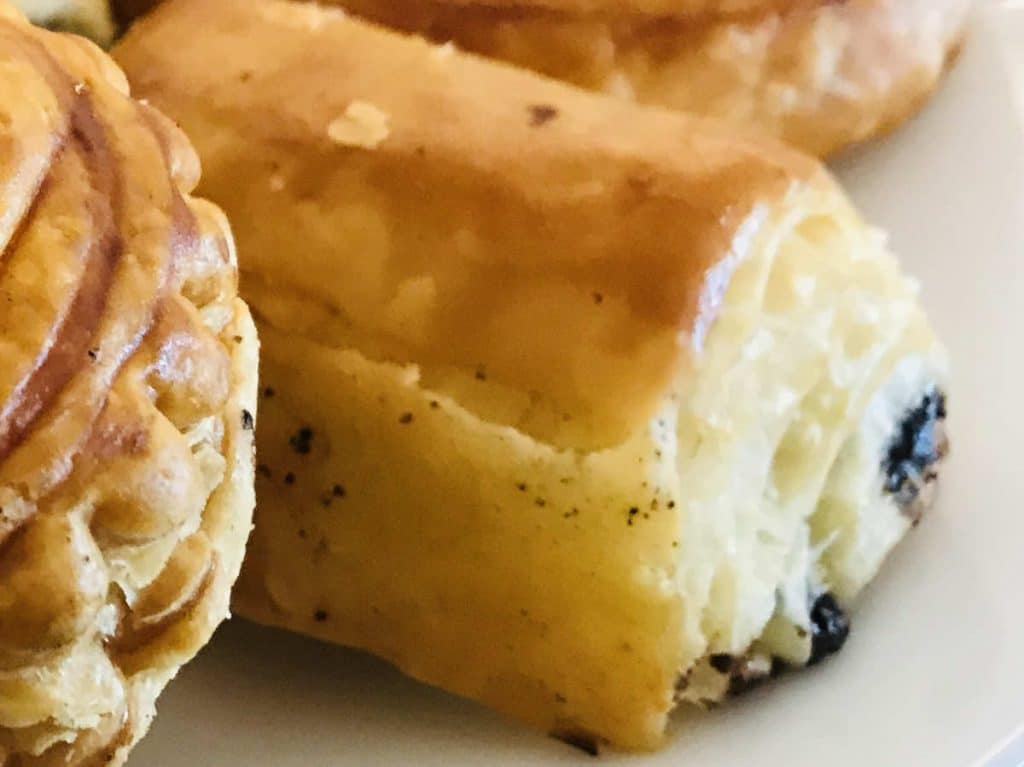
Made from the same pastry layers as a croissant with chocolate added to it, pain au chocolat literally translates to “chocolate bread”.
In the French part of Belgium, it is referred to as couque au chocolat, while the Quebecois also call it chocolatine. And the Germans? They call it schokoladencroissant. In all, a debate that is bound to continue.
20. Sable biscuits
A small crumbly biscuit, the biscuit sablé is a flavored cookie sold in boxes by French chocolatiers and confisieurs as such.
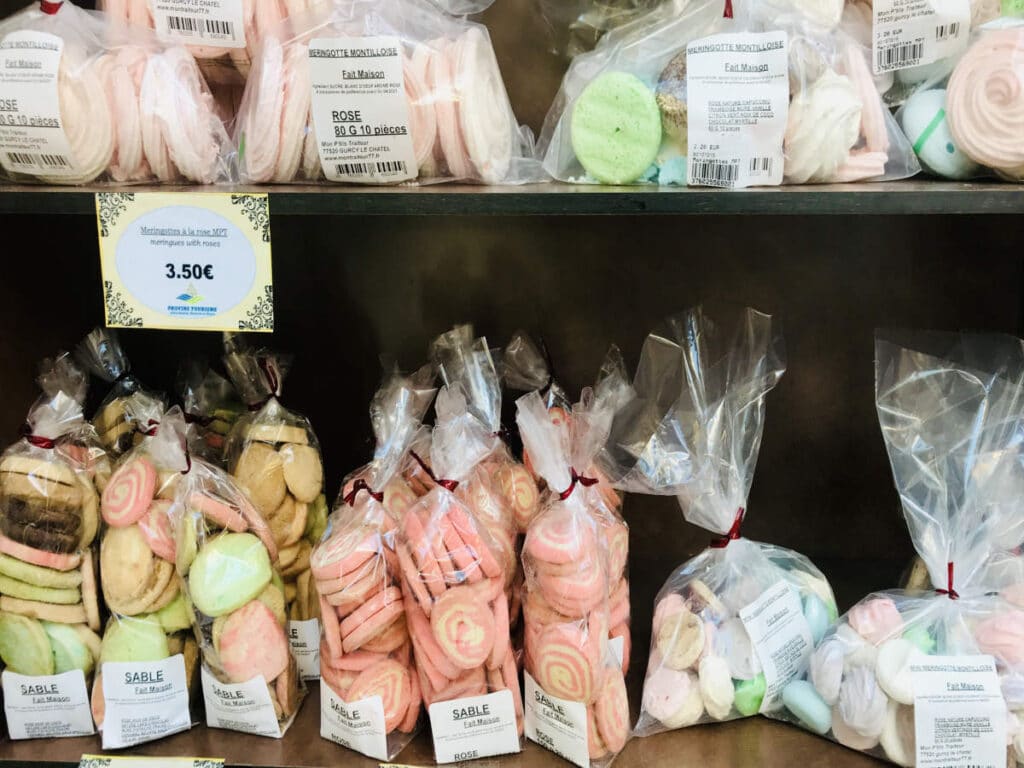
It originates from the town of Sablé-sur-Sarthe in the Loire region and is made from flour, butter, sugar and sometimes egg yolks, mixed quickly to obtain a “sandy” consistency. You can buy biscuit sablé here.
21. Socca
Now socca is not that easy to find outside of France, but it is a staple in Provence and the South of France. Originating in Nice, it is a type flatbread made with chickpea flour.
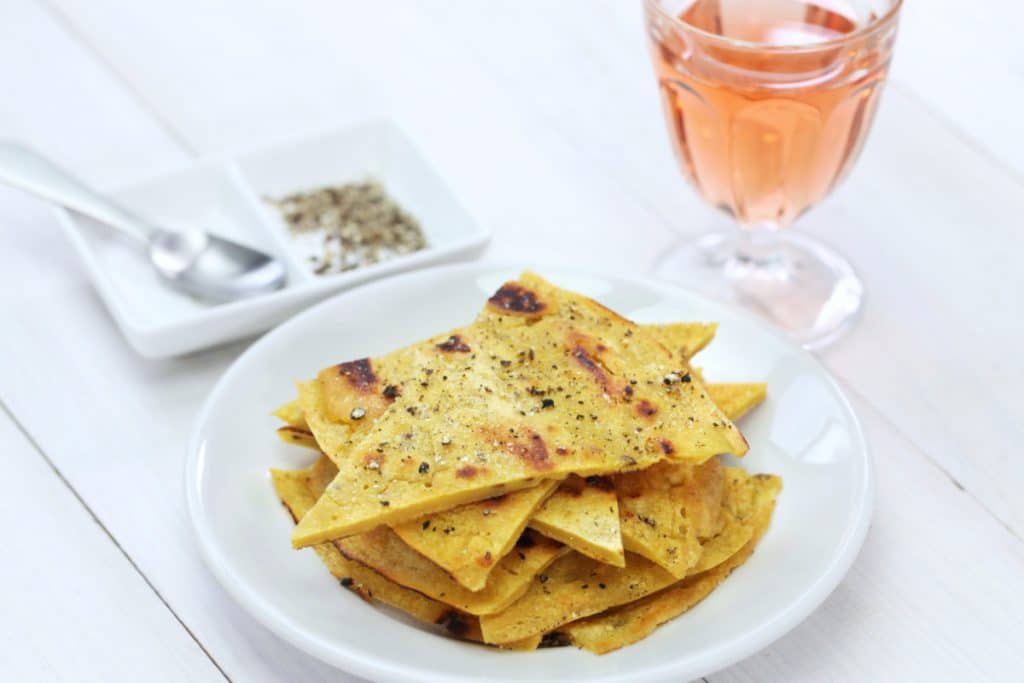
It is quite easy to make, a bit of olive oil, salt and pepper, and of course chickpea flour and you are good to go. Get the full Socca recipe here.
22. Vol-au-vent
A vol-au-vent is a puff pastry that can be filled with various ingredients, like chicken and mushrooms, escargot, etc.
It is like a meat or chicken pot pie, except it is usually made in individual size portions, since it is usually served as a large snack or appetizer.
23. Gauffres
Gauffres, or waffles as they are called in English, are a specialty in the north of France and Belgium.
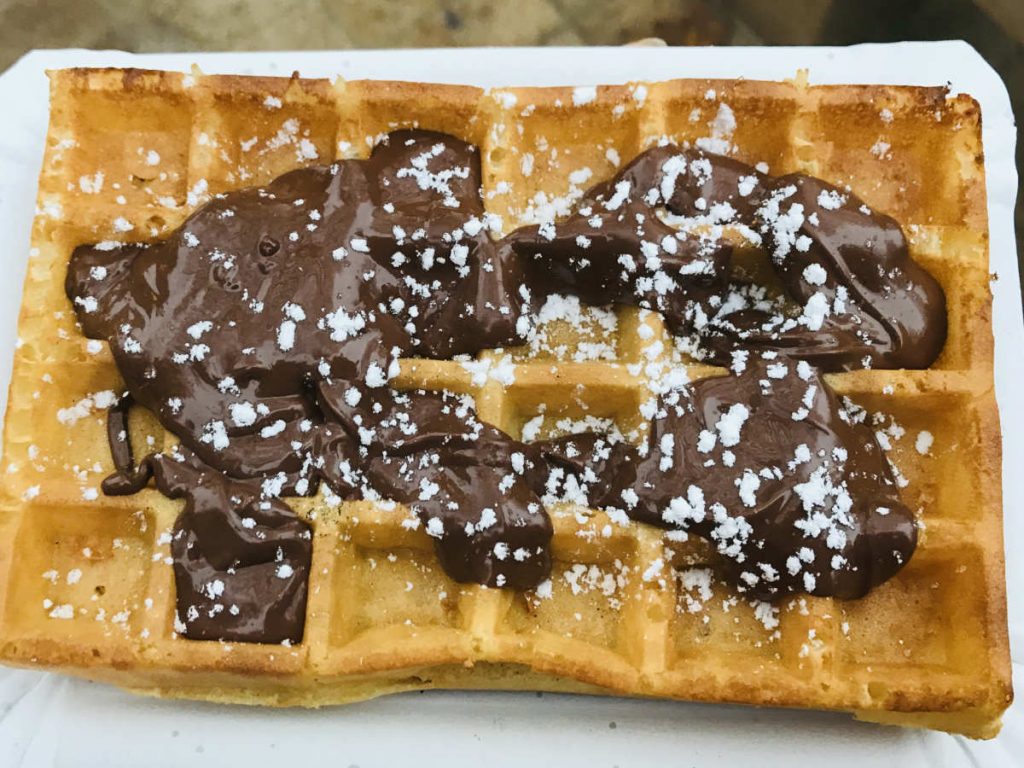
A pastry made with a light dough, they are baked in a waffle iron consisting of two metal plates that leave tile-shaped square imprints in the dough.
They are usually served as a dessert since the dough is sweetened, and topped with fruit, chantilly, chocolate, or other creams.

And there you have it, a few afternoon snacks that I usually serve time and time again here in France. If you enjoyed that article, you may like to read more about a typical French foods. A bientôt!
¹ Featured Image: Amanda Kirsh

